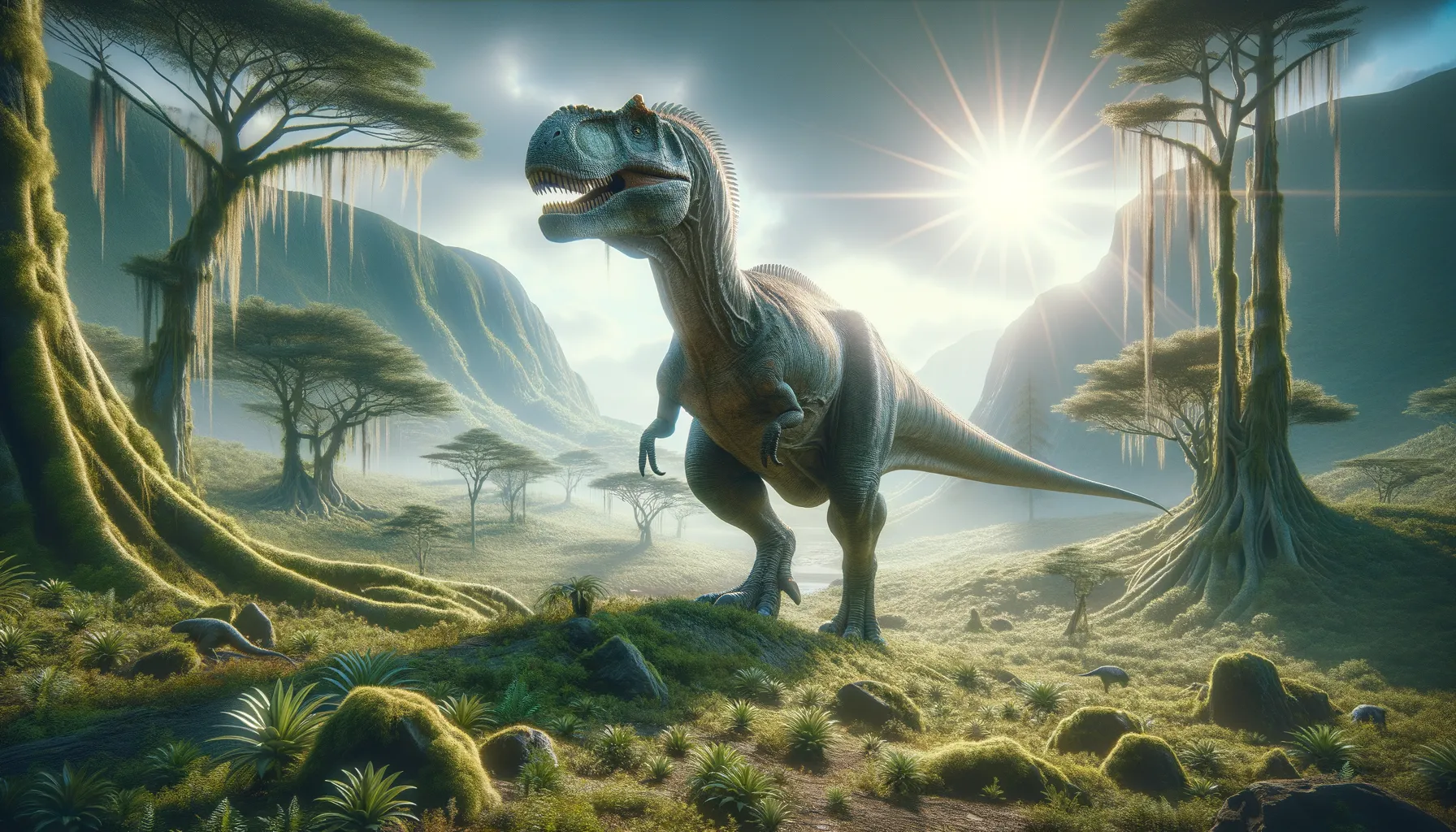
Xianshanosaurus
A giant built for peaceful browsing.
Period
Cretaceous
Length
Up to 8 meters long.
Height
Approximately 3 meters tall.
Weight
Around 1 ton.
Xianshanosaurus was a herbivorous dinosaur living in the Late Cretaceous period. Its discovery in China has provided valuable insight into the diversity of sauropods in Asia. Characterized by its massive body and long tail, it primarily fed on vegetation. Though not the largest of its kind, Xianshanosaurus remains significant for its unique adaptations and features.
Diet
Xianshanosaurus was a herbivore, feasting on a variety of plants available in its environment. Its long neck allowed it to reach high vegetation, while it could also graze on low-lying plants.
Hunting
As a herbivore, Xianshanosaurus did not hunt. Instead, it relied on its massive size and herd behavior to deter predators.
Environmental challenges
During the Cretaceous, Xianshanosaurus faced a range of environmental challenges including climate fluctuations that affected vegetation availability. Predatory dinosaurs were a constant threat, forcing these giants to stay in groups for protection. Natural disasters like volcanic eruptions could have also impacted their habitats.
Speed
Moderate, not built for high speeds.
Lifespan
Estimated up to 30 years.
First discovery
Discovered in eastern China in 2005.
Fun Facts
- Xianshanosaurus was a dinosaur that lived during the Late Cretaceous period, around 70 to 65 million years ago.
- It was a member of the sauropod family, which means it was a long-necked herbivore that relied on plants for food.
- Xianshanosaurus was discovered in what is now China, near the Xianshan region that gives it its name.
- Fossils of Xianshanosaurus include vertebrae and limb bones, helping scientists learn about its size and structure.
- This dinosaur was likely a large creature, with estimates suggesting it could reach lengths of over 15 meters or about 50 feet.
- Despite its size, Xianshanosaurus was a gentle giant, spending most of its time munching on leafy greens.
- The discovery of Xianshanosaurus has helped paleontologists better understand the diversity of sauropods in Asia during the Late Cretaceous.
Growth and Development
Xianshanosaurus experienced slow yet steady growth, typical for large sauropods. Hatchlings would start small but grew rapidly in their early years to avoid predation. Maturity was reached over several decades, during which Xianshanosaurus developed its full size and distinctive features.
Habitat
Xianshanosaurus lived in a warm, forested environment with a variety of plant life. It thrived in areas where trees and shrubbery were abundant, providing ample food sources. Rivers and lakes in the region supplied necessary water and supported a lush ecosystem.
Interaction with other species
Xianshanosaurus likely coexisted with other herbivorous dinosaurs, sharing lush feeding grounds. Predatory interactions involved defense mechanisms such as loud calls or grouping in herds. Its size helped reduce vulnerability to carnivorous dinosaurs.
Natural lifespan
Xianshanosaurus could live up to 30 years in natural conditions.
Reproduction
Reproduction involved laying eggs, with nesting likely occurring in secluded, safe areas. Parental care, if any, involved protection rather than nurturing, as is typical with sauropods. Eggs were large, matching its massive adult size.
Social behaviour
Xianshanosaurus likely lived in groups, offering safety in numbers from predators. Herd behavior facilitated teaching offspring survival skills and provided a social structure. Communication methods might have included vocalizations or physical gestures.
Fossil locations
Fossils of Xianshanosaurus have been predominantly found in Xianshan, eastern China. These discoveries have contributed significantly to understanding the region's prehistoric fauna. Fossil evidence suggests it was part of a larger ecosystem rich in diverse species.
